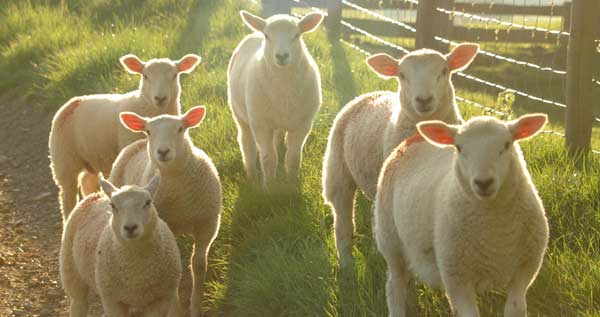
Over my usual bowl of oatmeal one recent morning, I read an article about a remote restaurant in Dranouter, Belgium. Chef Kobe Desramaults of In De Wulf prizes local ingredients such as mackerel and mugwort and Ostend oyster in whey sauce, and one of his noted delicacies is headcheese (a terrine made from jellied flesh of the head of a calf, sheep, or pig) served on a cleaned pig skull.
Although the disparity in eating habits between the world’s rich and poor is nothing new, it struck me as strange that people pay handsomely for the privilege of eating food off a pig’s skull at a time when 842 million people—most of them in Asia and sub-Saharan Africa—do not have enough to eat. But it is also true that, even in poorer regions of the world, people are becoming more carnivorous, and a recent paper in the Proceedings of the National Academy of Sciences suggests that in their meat-consuming habits humans have reached the level of an anchovy. Let me explain.
As many students learn in high school, animals and plants on Earth form a complex food web in which plants produce food through photosynthesis (they convert water and carbon dioxide into sugars and oxygen, using sunlight as an energy source), and animals consume the plants—or other animals that eat the plants. Plants and animals can be assigned a “trophic level” based on where they appear in the food web, with plants, the primary producers, appearing at trophic level one, herbivores such as cows at trophic level two, and carnivores at three, four and five. Omnivores, whose diets are a mix of animals and plants, are trophic level 2.5.
The recent study, by Sylvain Bonhommeau of the French Research Institute for Exploitation of the Sea in Sète, assigns different “trophic levels” to species based on the proportion of animal and vegetable foods in their diet.
Across the world, the trophic level of humans varies from 2.04 in the African country of Burundi (where people eat a diet that is 96 percent plant-based) to 2.57 in Iceland, where the diet is 50 percent meat and fish and 50 percent plants. The global median is 2.21—a figure that has risen by three percent since 1961, largely because of increased meat eating in India and China. This happens to be the same trophic level as anchovies and pigs.
Meat consumption exacts an environmental toll; estimates by the Environmental Working Group indicate that raising cows and sheep increases greenhouse gas emissions by 10 to 40 times compared with growing grains and vegetables.
A recent report published in the journal Meat Science suggests that the rise in intensive sheep farming in Mediterranean countries can also lead to “fear, aggression and stress” in the animals, according to Lorena Aguayo-Ulloa of the Faculty of Veterinary Science at the University of Zaragoza in Spain.
Aguayo-Ulloa reports that lambs from different farms are sent to “classification centers” for fattening, where “restrictive conditions can cause aggression, boredom, development of stereotypic behaviors and frustration.” She also found that lambs raised in enhanced environments, including ramps that allow for spontaneous exercise, exploration, and play, had greater immunity from disease and gained weight faster than lambs housed in barren pens. The meat from enriched lambs was also “tenderer than controls.”
I haven’t eaten meat or chicken since 1985, a decision that followed my one-and-only act of animal liberation. (I rescued three chicks from incineration in my university lab and raised them in our garden.) So while I am never, ever, going to eat headcheese from any species, I do think there is a certain authenticity to eating the stuff on the top of its original container. If you are going to eat meat, know from whence it came. And make sure that while the animal was living, it wasn’t suffering from fear, aggression, boredom, or frustration.

